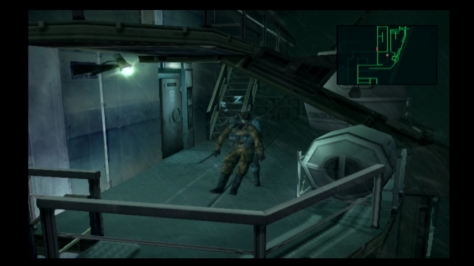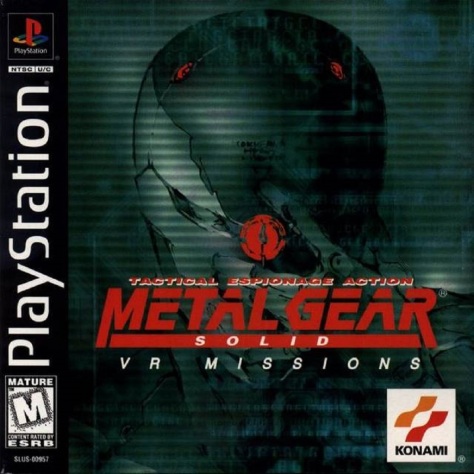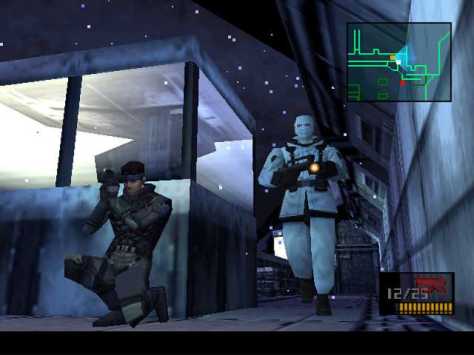
It’s been about a month since Jeff and I completed Metal Gear Solid 2: Sons of Liberty. Generally, I try and write about a game within a few days of completing it but this game wound up provoking so many mixed emotions for me. It’s left me awestricken in many ways, some good and some bad. This is a game that’s often touted as the first postmodern video game, and while I’m too much of a dullard to fully comprehend this statement, the way my own opinion has been split in so many ways is indicative of its provocative nature. It’s a game I admire and disdain at the same time, and I’ll try my best to detail some of the major reasons why.

Like our recent playthrough of Metal Gear Solid, this wasn’t my first experience with this game. I originally played it a couple of years after its release and recall thinking the world of it then. As a sequel, the narrative subverts most preconceived notions of what to expect, and I think high school John really got a kick out of that. As an adult, I still find that fascinating, perhaps more so now, especially having directly completed its predecessor. One of the most notable ways Kojima did this was through a bait-and-switch of the protagonist.
While the first hour or so of the game stars Solid Snake, as one would expect, the true star of the game is Raiden. As a character, he’s anything like Solid Snake, the gruff, self-assured action-movie hero one expects in a game like this. Instead, Raiden is supposed to represent the player, a novice whose preparations for the big time constituted training in virtual reality. These preparations leave him undoubtedly skilled, but not with a mindset capable of being successful in the ways Solid Snake has been previously. His lack of confidence was grating to witness, although his character arc climaxed with my impression of him notching up a little bit.

The story of Metal Gear Solid may have grown convoluted but it doesn’t hold a candle to anything on display here. At its most basic, this game centers on Snake and Otacon’s quest for Metal Gear nonproliferation and Raiden’s journey to discover himself. Then about a dozen layers are added on top of those and any further comprehension requires extensive notetaking and periods of downtime to digest the events of the lengthy and frequent cutscenes. The breakdown between actually playing the game and watching it was somewhat jarring, although I did enjoy watching more than playing. Maybe I feel that way because the time I had to develop my stealth and combat skills was squashed between lengthy conversations that took me out of the experience? Either way, I felt my performance was less impressive compared to the previous game.
Due to narrative reasons that are mind-blowing, the events of the game are purposefully similar to the Shadow Moses Incident and wind up serving as little more than a test to creating a solider equal to Solid Snake. Pulling the strings is a shadow organization known as the Patriots. Already in control of the United States (every election has been a sham and most major government officials are representatives of the organization) they’re seeking control of the flow of digital information now. A new Metal Gear was designed and the AI contained within, GW, is the construct to achieve their goal. There are about another dozen crucial characters and their allegiances and double crosses become confusing narrative fodder. Thankfully I did take detailed notes but even so, I remain unclear on many things and feel another playthrough is necessary to really comprehend everything. Nonetheless, the narrative was the freshest aspect of this game and it was unpredictable at every point.

Likewise, the depth found in the gameplay has also been drastically increased. The increased AI is no joke; no longer do guards make buffoonish decisions when catching a glimpse of Snake in a box. Rather, they call reinforcements more often than not and send in additional soldiers to “clear” an area, searching in most nooks and crannies. It felt like setting off an alert resulted in many more mission failed screens compared to the previous game. I want to say in addition to the more stringent AI, the alerts lasted longer too. Frequently, I would throw Raiden or Snake in the line of fire just to get a quick reset instead of hiding for the few minutes it would take for things to cool down. This resulted in a less enjoyable gameplay experience. It’s also one of the reasons I’d like to replay the game again, just to take my time and devote all my focus to remaining stealthy and see if my performance and enjoyment increase.
The gameplay improvements are not relegated solely to stealth actions. Gunplay received an overhaul in the form of first-person shooting. First-person shooting provided a greater level of accuracy when eliminating enemy threats, and provided some fun when taking them by surprise. Individual body parts could be targeted, including the ability to shoot the radios an enemy may call for reinforcements with. This viewpoint was only useful in specific cases though as the character would remain locked in position – the game couldn’t be entirely played like a first-person shooter. It was a smart addition nonetheless and added a further layer of complexity to approaching a situation.

Like its predecessor, there were many great set piece scenes with most of them revolving around the varied boss fights. Again, there was a rogues’ gallery of bad guys to defeat and each encounter was a unique experience. I can’t think of any being down-to-earth showdowns; for instance, Raiden battling a roller-skating mad bomber of sorts or his showdown with a small force of towering Metal Gears. The set pieces extended beyond cinematic fights though, including one particularly frustrating platforming section. One section in particular ate our lunch, seeing us retry twenty or so times. Raiden was forced to navigate a narrow strip of piping across a body of water and the various obstacles highlighted why such a section didn’t jive with the super responsive character movements.

What do I think of this game? The narrative is bold, but tough to follow. I want to replay and reread my notes to try and piece everything together. I didn’t much care for Raiden although I felt he was redeemed by the end; for a deeper analysis that I agree with (and reasoning why this game is postmodern), read this. The gameplay split my opinion the most. I like the improvements, even though the increased AI resulted in a tougher game with more frustrations. Again, it’s another reason I’d like to replay, in order to have a more enjoyable experience. As it stands, it was enjoyable seeing what happened in the game, less so to actually play. I still think the original is unsurpassed as a pure video game or piece of entertainment. I would agree that this game is incredibly bold and deserves most every ounce of praise; it just wasn’t as fun to play.
![Metal Gear Solid 2: Sons of Liberty [PlayStation 2] – Review](https://mybrainongames.files.wordpress.com/2015/11/metal-gear-solid-2-sons-of-liberty.jpg?w=672&h=372&crop=1)
![Metal Gear Solid: VR Missions [PlayStation] – Review](https://mybrainongames.files.wordpress.com/2015/10/metal-gear-solid-vr-missions.jpg?w=672&h=372&crop=1)




![Metal Gear Solid [PlayStation] – Review](https://mybrainongames.files.wordpress.com/2015/09/metal-gear-solid.jpg?w=672&h=372&crop=1)





![Metal Gear Solid V: Ground Zeroes [PlayStation 4] – Review](https://mybrainongames.files.wordpress.com/2015/01/metal-gear-solid-v-ground-zeroes.jpg?w=672&h=372&crop=1)












